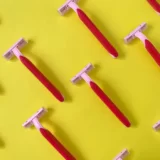
In our other blog post, we introduced the advantages of switching to copper alloy plunger tips, but since the unit cost increases with copper alloy plunger tips, how much of a cost reduction effect does it actually have?
We are curious about this, so we would like to introduce an actual simulation of the cost reduction effect of copper alloy plunger tips.
The conditions are as follows.
10 units of 350-ton die-casting equipment
2-shift operation
260 days operation per year
1 cycle time: 36 seconds/shot
Mainly produces automotive parts
As shown in the table below, there are three direct benefits of using copper alloy plunger tips on a yearly basis. Indirect benefits such as reduced overtime and improved quality due to the creation of extra time are omitted here.
- Reduction of annual equipment and labor costs through productivity improvement (Reduction in equipment and labor costs for product manufacturing)
- Reduction in plunger chip costs due to longer service life
- Reduction of greenhouse gas emissions through savings in operating hours

Contact us to obtain our Excel file and enter the above conditions, equipment costs, labor costs, etc. Only the yellowed areas are to be filled in.
The Operational Availability Rate (the ratio of the time the machine is actually running, excluding the time it is stopped for mold changes and various adjustments). Assuming the machine stops for about 1.5 hours per shift, it is set to 81.25% (8 hours – 1.5 hours = 6.5 hours/8 hours = 81.25%).

Enter the depreciation cost (equipment and land/building) and then enter the equipment operating costs. Enter the annual cost of plunger chips, repairs, and energy costs in the auxiliary material cost. In some cases, this area is difficult to find out, so if you are unsure, enter an approximate amount based on sample data (the data is based on thousand yen/year).

Labor costs are a bit tricky to explain. Labor costs are broken down into man-rate and number of units. The man-rate is the cost per worker, including salary, social security, training, etc. For example, if a worker is paid 360,000 yen per month, including overtime, the man-rate is 720,000 yen, or 60 yen per minute. Next is the number of units, which is the number of people operating the equipment per unit. For example, if one person is looking after three machines, the number of units is 0.33 (1÷3=0.33) persons/unit. Lastly, there will be the overhead costs. This is the manufacturing overhead counts for transportation, repairs, inspections, etc. It would be easier to understand if you consider how many people are in these indirect departments compared to those in direct manufacturing. For example, if there are 10 people in direct manufacturing and 2~3 people in indirect manufacturing, it would be 25%.
This completes the basic information.

Then enter the information in the yellow screen on the left side of the screen.
The cycle time reduction time is set to 2 seconds/shot (Before 36 seconds → After 34 seconds).

As a result, the following conclusions for 10 machines were reached
- Annual equipment and labor cost reduction for 10 units is 70,333 USD
- Plunger tip cost is reduced by 2,831 USD due to longer tip life, although the unit cost increases due to the use of a copper alloy.
- Time savings of approximately 1,900 hours per year for 10 units.
- Total cost reduction per year is 9.4 million yen.

As shown in the data above, with a production volume of 1000 tons/month, approximately 46 tons/day or 2.9 tons/hour of aluminum is produced, which means that 1200 kg of greenhouse gases are emitted per hour due to melting. Assuming a production rate of 0.5 kg/shot x 100 shots/hour = 50 kg = 0.05 tons/hour, this means that 0.05/2.9 x 1200 kg = 20.6 kg/hour of greenhouse gas emissions per hour.
Therefore, if the time required to die-cast about 1900 hours per year can be reduced, 1900 hours/year x 20.6 kg/hour ÷ 1000 kg/ton = 39 tons/year of greenhouse gas emissions reduction can be expected.
If cycle time could be reduced by 2 seconds, compared to the conventional 36 seconds, it would improve productivity by 2/36 = approx. 6%. It also means the reduction on greenhouse gas emissions by approx. 6%.
If you plan to purchase a die casting machine with copper alloy plunger chips, it may be eligible for a government subsidy. You can study your local subsidies.
How was it? If the product is eligible for a subsidy as well as a reduction in manufacturing costs, it will be a great benefit. We hope that both die casters who normally use aluminum die castings and manufacturers of die casting equipment will verify the benefits of copper alloy plunger tips.
Request us a free Cost Reduction simulator. If you have any questions, we will be happy to assist you.


